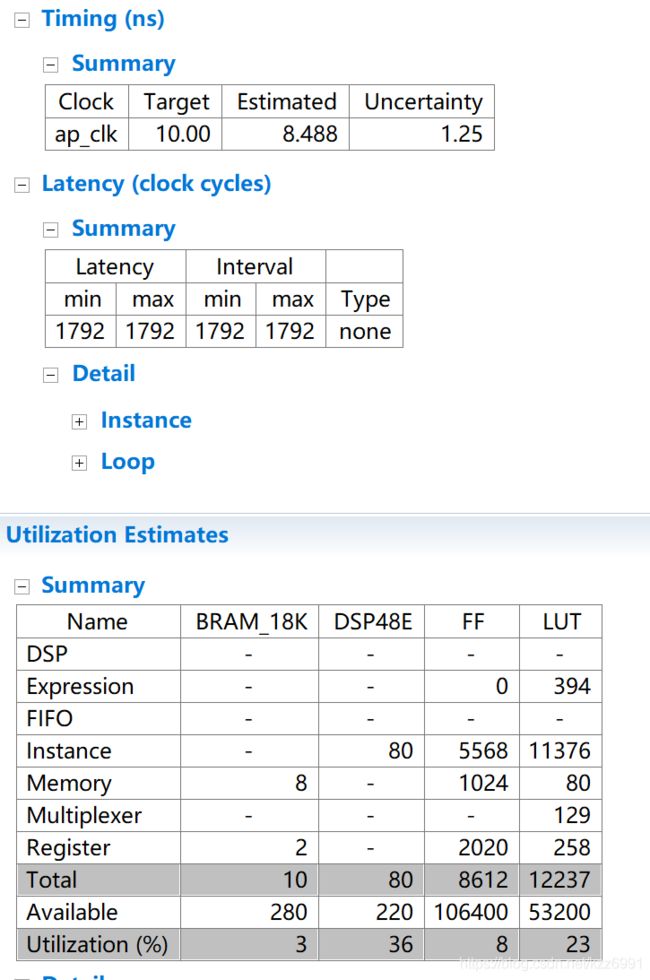- 想家
爆米花机
也许不同于大家对家乡的思念,我对家乡甚至是疯狂的不舍。还未踏出车站就感觉到幸福,我享受这里的夕阳、这里的浓烈柴火味、这里每一口家常菜。我是宅女,我贪恋家的安逸。刚刚踏出大学校门,初出茅庐,无法适应每年只能国庆和春节回家。我焦虑、失眠、无端发脾气,是无法适应工作的节奏,是无法接受我将一步步离开家乡的事实。我不想承认自己胸无大志,选择再次踏上征程。图片发自App
- 教育
用心灵温暖心灵
@陈春丽长期学习班冯倩。今天一早就听到说高职合并,取消中专教育的教育信息。感觉是虽然知道,再听还是吓一跳。国家重视职业教育为何还要取消中专技术学校的教育?再听高中就要进行技术教育了,一部分人学习好继续努力学习考大学,一部分人在高中就可以进行职业教育接受职业教育了还要中专技术教育学校干什么呢!a有些职业教育学校转型升级快,不是孩子上完给找工作,而是学校帮孩子创业,我觉得是不错的方向!新闻新你得实时更
- 女儿考研完报考雅思
捡拾流年
是否我过于焦虑?会不会无形间让女儿觉得压力太大了啊。2022年对于我们家来说是不平常的一年。女儿今年大四,为了准备考研,暑假也没回家,年初去了学校到了年末才回家。女儿自己一个人面对考研,没有参加培训,大四学校作业论文等课业也多,她同时也是很努力复习考研的。在疫情开放很多羊的时期,女儿终于顺顺利利参加12月24、25号的考研,我们和家人都觉得女儿回家来要好好休息调养。可女儿回到家,我再查阅考研信息,
- 三梦 | 心碎了还是醉了
培根不是肉
今天,让我一起走进彝族火把节。图片发自App“中国彝族火把节之乡·2016布拖民间火把节”在离学校走约一个时辰路程的地方举行,奔着要在如此隆重的节日之中好好欣赏一番的目的,三梦团队一早便和随队的两个孩子整装待发。图片发自App第一部分:吉尔吉呷我万万没有想到,从踏出校门开始,从我牵上那个孩子的手开始,我心的触动就没有停过。图片发自App我以为我这一路会在观察、拍照和思考中度过,但我发现我错了。这个
- xilinx vivado PULLMODE 设置思路
坚持每天写程序
fpga开发
1.xilinx引脚分类XilinxIO的分类:以XC7A100TFGG484为例,其引脚分类如下:1.UserIO(用户IO):用户使用的普通IO1.1专用(Dedicated)IO:命名为IO_LXXY_#、IO_XX_#的引脚,有固定的特定用途,多为底层特定功能的直接实现,如差分对信号、关键控制信号等,不能随意变更。1.2多功能(Multi-Function)IO:命名为IO_LXXY_ZZ
- 骑昆明到北海—119 砚山县
61清风i
从十年前第一次长途骑行青海湖开始每年一次长途骑行看风景,尝各地美食,探访异域文化,记录途中美食美景美事,已逐渐形成习惯。每年春季详细规划好线路,夏季出行,2020年因为疫情迟迟不能确定线路和行程。总算到了暑期疫情逐渐消失,规划了50多天的云南昆明—广西北海计划。本次行程从云南昆明出发到广西北海市结束,五十一天骑行二千多公里线路昆明-官渡古镇-环滇池--澄江市一抚仙湖—路居镇--江川区--通海县—龙
- 2019考研 | 西交大软件工程
笔者阿蓉
本科背景:某北京211学校电子信息工程互联网开发工作两年录取结果:全日制软件工程学院分数:初试350+复试笔试80+面试85+总排名:100+从五月份开始脱产学习,我主要说一下专业课和复试还有我对非全的一些看法。【数学100+】张宇,张宇,张宇。跟着张宇学习,入门视频刷一遍,真题刷两遍,错题刷三遍。书刷N多遍。从视频开始学习,是最快的学习方法。5-7月份把主要是数学学好,8-9月份开始给自己每个周
- 无题
琴韵无声
问了几家门诊部都没有科兴疫苗,突然自我感觉这种品牌的疫苗是不是少一些,于是又无端滋生焦虑感,可别一拖再拖影响孩子上学,学校要求下学期开学得接种完新冠疫苗。我在这种自制的焦虑的驱使下,立马上网查询看哪里能打到北京科兴的疫苗,终于找到了,大喜。与珊宝一起打车过去(路比较远,早想借此机会让她徒步拉练一下的计划泡汤了)。到达目的地,一看到医院大门前一条长龙似的队伍就知道那里应该是打疫苗的地方。迅速过去排队
- 准备
胡珊珊乐平九小
尊敬的各位领导、各位同仁们:大家上午好!我是来自乐平九小的胡珊珊。今天很高兴能有机会给大家做“智慧作业”应用培训。说到“智慧作业”我感触颇多,我是在智慧作业中成长起来的,我也时常以自己是一名“智慧作业人”自居。早在2020年疫情期间,学校电教处周光杰主任在学校群里发出智慧作业抢题通知,我看了有些心动,一节微课相当于一次省级公开课,这对于我们普通老师是多么难得的机会啊。但想归想,我也不会用软件啊,再
- 大三成了分手季?
三聿鱼
图片发自App一次玩真心话大冒险的时候,知道漂亮的A学姐原来和社团那个帅帅的学长H原来是彼此的前任。知道时还是惊讶的,知道学长H现在在准备考研,上次从湖边回学校时,他说现在很忙,所以社团那边也没有再去。他想考武汉大学,每天都是泡图书馆。后来和学姐A在假期一次一次合作后,也熟络很多,知道她也将要回老家实习,想考公务员。学姐A大学专业是英语,当时想问更多,觉得不变开口,也没再问。在那次真心话大冒险中,
- 自由职业态 2017/12/15
jojovicky
比较适合我个人成长与发展期。为什么这么说,从小,家庭给予我相对自由的成长空间,长大后在学业与职业上也是给予自由。除了商科专业是家长提供建议外,其它专业是建立在个人兴趣与需要基础上。这是自己成为自由职业态与心态的由来。在各专业中不仅结识了同学朋友甚至成为今天的合作小伙伴。这也是奠定了自由职业态的基石。曾经为了平衡家庭孩子以及工作,我选择了进入学校当一名老师,特此感谢我的老板(伯乐)和先生以及家人给予
- 儿子开学报道第一天:我和公公一起送他去学校
文又又
儿子今天是开学报道的的时光,儿子对于是谁送他去学校非常在意,他也想着自己一个人去学校,不要家长送,我们告诉他,可以等到他再大一点的话,就让他自己去学校。我还是一如既往的早起,5点闹钟响起,我的头还昏昏的,就窝在被子里看手机。看爆款文,看热点内容。还看了一会《明朝那些事》,看着看着,就觉得眼皮打架想要睡觉。可是我的潜意识还是提醒自己,起床吧,今天要6点钟起床,说好要叫儿子早起,今天他是8点钟要到学校
- 2022-07-06学会放手
杨晓玲乐平市第十一小学
2022年7月5日星期一晴今天结束了国培培训,上午收拾好物品,带着孩子整理心情,带着憧憬去到孩子新的学校,因为从小我有意培养孩子自己整理自己内务,孩子很认真的把自己要用的都整理好,不用的都另外装好,这一点孩子的能力还是挺强的。把自己的行李按学校提出的要求认真的整理好,我们便出发了。我们早早的来到学校,时间还早,便让她到阿姨那休息了一会儿,每去到一个新的地方,能迅速的安顿下来,这是非常好的。时间很快
- 好运来
是露漫漫呀
4月9日下午17.45分晴此时学校里广播站放着激情热烈的歌曲——《好运来》。“好运来,祝你好运来……”第一瞬间,我想到了他们是放这首歌是为补考的同学招来好运气的。然后我思绪飞扬,飘到了高中考试前同学放这首歌来抚平心态。飘到了高考前整理班级课桌时,学校喇叭里大大咧咧放着《好运来》……疲惫的我会心一笑。飘到了上学期考细解实验试卷时的那个中午青春小胖放这首歌来招好运,祈祷考的都会…………关于《好运来》的
- 教师资格证常考的5个知识点
a3cb74a20840
知识点1:教育与人的发展(5规律、4因素、3动因)五大规律:顺序性—循序渐进阶段性—不搞“一刀切”不平衡性—抓关键期互补性—扬长避短个别差异性—因材施教考点精华:1.举例子对应五大规律;2.每个规律的教学启示;3规律特点。四大因素:遗传(地位:物质前提、可能性)环境(地位:多种可能、现实性)学校教育(主导)个人主观能动性(动力、决定)三大动因:内发论(1.孟子:性善论;2.弗洛伊德:性本能)外铄论
- 2023-05-25
季风2026
育人细无声,光影文传情------南校区射灯投影内容为了丰富校园文化建设,打造全方位、多角度、光影文的育人环境,宣教科特出具“育人细无声,光影文传情”的射灯文化建设方案,拟定投射内容若干,请领导审阅。第一阶段投射内容:校风校训等学校精神。1.南校区大门口:校风:诚朴自信知行合一校训:厚德精技励学创新2.教学楼门口:教风:因材施教德技双馨学风:博学慎思明辨笃行3.宿舍楼门口:团结友善互帮互助包容大度
- 家庭教育,先家庭后教育:家庭是硬件,教育是软件
唯唯育家
很多家长为孩子付出很多,也学习很多家庭教育课程,看很多家庭教育书籍,为什么还是教育孩子很困难?因为主次颠倒,没有抓住家庭教育的主干!家庭教育,很多家长只行使“教育”功能,忽视了“家庭”功能!家长总想着怎么教孩子,怎么教育孩子!如果单靠教育,就能把孩子教好,学校老师在教育方面比家长在行,孩子应该在学校就被教好了,哪还需要家庭教育?为什么只有学校教育不够,还需要家庭教育?家庭教育的主要功能不在“教育”
- 这样共读一本书
eggplant
2021年10月6日星期三本期学校阳光管理轮训共读刘铁芳教授的《以教学打开生命——个体成人的教学哲学阐释》,这是继共读刘教授《什么是好的教育》之后的第二本书籍,这两本书籍都是有关教育的哲学书籍,应该说,《以教学打开生命——个体成人的教学哲学阐释》是《什么是好的教育》的延伸、丰富与升华,理论性更强,哲学意味更浓,对于一线教师来说,接触哲学类的书籍较少,在阅读上有些内容的理解有难度,但是,有难度才更值
- 简九月的第188天日更|二宝米乐发烧了
简九月
昨天夜里,二宝开始发烧了,刚开始是37度多点,慢慢地长到38度。我喂了她点退烧药,好久才把烧退掉。一夜我又醒来好多次,看看她是否发烧。早上六点多再次起烧了,有给她喝了退烧药,烧退了后二宝睡着了。我一上午在学校担心的不得了,害怕她又起烧,还好一上午没有发烧。下午一直是38度以下,小青给她喝了好多水,烧也退了下来,可是,现在又起烧了……38.2度,喝了药之后,睡也睡不好,我就一直抱着,还没放下。这是二
- 目送
河北张海霞
往年这个时候,孩子们已经返校了,新学期已经开始了……今年这个超长的寒假,给了我们更多的陪伴孩子的机会。我深知:随着孩子年龄的增长,年级的升高,在孩子的求学生涯中,和孩子在一起的时间会越来越少了。即将上高中的儿子,意味着一个月回家一次;即将上大学的女儿意味着半年回来一次。我要好好珍惜与孩子们在一起的美好时光。记得三年前,儿子上初中,女儿上高中,都是寄宿制学校。初中半月放一次假,高中一个月放一次假。刚
- 2022.5.2《儿童纪律教育》培训总结
韩雪www
——韩雪+春蕾六幼我们常会听到说“榜样的力量”。在家庭,父母就是孩子的榜样,在学校,老师就是孩子的榜样。榜样究竟有多大的力量呢?又是怎么影响孩子的?听完本章,触碰内心,别有一番感受。一、感受中国人以前表达爱的方式,大多比较含蓄。就像我的爸爸,我小时候没有听过他说过一句:爸爸爱你。但他陪着我学骑车、去地里抓蛐蛐、干活回来总给我带一些我爱吃的东西……虽然没有语言,但我能感受到那种发自内心的爱,看着他晒
- 安全演练有保障,专项督查促改进——记公道中学校园安全(化学实验)系列活动
公中盛传云
近期,公道中学为了全面贯彻落实“预防为主,安全第一,综合治理”的安全工作方针,学校按照安全工作方针的要求,通过多种途径开展了以“预防演练为主,人防物防技防相结合”的主题的安全教育系列活动。11月8日,在学校校务会议上,学校党总支书记李兆兵强调,学校必须采取有力措施,不断增强教师综治安全防范意识,落实学校安全工作责任制,切实保障教师和学生的安全坚决杜绝意外事故的发生,确保校园平安稳定、教育教学工作顺
- 若爱无疾,该当如何?她曾经是他的命,后来是他的恨,最终成了他心尖上拔不去的刻骨衷情
皮皮我最皮
温柔坐在宽大的包厢里面的一个沙发角落里,手上拿了一杯饮料,情绪不怎么高昂地窝在那里喝着,她看似轻松,漂亮的脸上还挂着淡笑与周边的大学同学们说话聊天,可余光之下却满是紧张。她怕他会来。可她又想他能来。今天是大学校友聚会,她原本也不想来的,可熬不过死党何乐的胡搅蛮缠。何乐说她既回来了,以后指不定会用到这些同学们,就算用不上,过来走个过场,跟同学们混混关系也是好的。温柔觉得何乐说的也对,就跟着来了。可自
- 《教育信息化2.0素养提升》思考与总结———2019兴成长4⃣️班
宁都5940李娟
迎来了美好的假期生活。你可以放松。但是不可以向自己的惰性妥协。你决定不了太阳几点升起,但你可以决定你何时起床。暑假前一个星期很喜欢这样的生活。上午逛逛超市,中午陪爸妈吃饭。下午午觉或者看看书。洗洗衣服干干活。晚上七点钟开始去上课。晚上回来看看电视。熬夜、这样的生活。没有压力。没有目的。没有成果。看似乎一切都可以。这样的生活最多只能过一个星期。暑假的第一个星期学校就开始安排个为教师的素养提升以及自身
- 今日备忘之星期六 星期天
教育行走林
——这两天干了点啥(二)为了防止落下一项工作,每天都要提前写一个今日备忘,然后晚上查一查,看看有没有落下一项工作没干,俗话说得好“好记性不如烂笔头”。周六周日比平常工作也不少,这两天干了点啥呢,先说周六吧:早自习在八五班上历史,同学们整体背书状态还不错,下课前进行了表扬;上午第一节课在后面办公室盯着给学校伙房送米、面、油、肉、蔬菜的等小贩过秤、开票,严格把好常规食品原料采购关;上午第二节课拿着宿舍
- Post teen
达米安曾
提起绵阳这个城市,你会想起什么?可能是那碗味道淡得让人骂娘的绵阳米线,这种把粉扔碗里拿热汤一冲就给你端上来的敷衍食物如今会在某个无聊的夜晚缓慢地折磨你的味蕾。可能是凯德广场的扶梯,去隔壁沃尔玛买几瓶劣质黑啤后慢悠悠地站在扶梯上打量上上下下的人,情侣家人老人年轻人女人男人,他们是一本本或者无聊或者生动的小说。可能是学校的情人坡,其实情人坡没有多少情人,大三的时候学校放弃治疗没再打理这个地方,杂草长得
- 2022-8-16晨间日记
飞扬的雪ing
今天是什么日子起床:7:30就寝:11:20天气:晴热心情:悲伤逆流成河纪念日:被恶意锁文第三天叫我起床的不是闹钟是梦想年度目标及关键点:好好吃饭好好睡觉好好学习,忘记所有悲伤本月重要成果:1.完成暑期各类学习任务2.减肥减肥减肥3.督促孩子们好好训练节目成功日志-记录三五件有收获的事务1.《疫情.怡情》依然被恶意锁文,幼儿级“晨间日记”则不会被锁,可悲可叹!敷衍至极的文章收获上百个赞,可喜可贺!
- 孩子初三马上毕业,学习成绩不好,想读3+2大专,有前途吗?
英语时代
目前,我国高等教育出现了“强者恒强、弱者恒弱”的现象,清华北大等一批985高校(现在叫一流大学),基本上处在象牙塔之顶,无论是学校平台、师资力量、学生水平还是企业的认可度,都可以说是面面俱到,学生们享受着我国最好的教育资源,将来的就业质量都非常高,之后再反馈给母校,母校名气更大,生源质量更好,一直如此,良性循环!而地方院校,例如地级市大学/学院等,基本上在各个方面都不如上述顶尖院校,因为学校基础薄
- 乐乐和天天突然和睦相处,乐妈有点不适应
乐亦家有萌宝
家里只要乐乐和天天在家,打打闹闹,你追我赶,哭哭啼啼,一地鸡毛。哎!这个礼拜突然变得安静了,我还真有点不适应,我那颗贱贱的心又发贱了?哈哈!周二放学,乐爸先去幼儿园接了天天,再去接乐乐。乐乐在学校门口炸鸡店,给天天买了个鸡腿。天天吃得津津有味,乐乐讨好起天天来。周四放学,乐乐在放学路上买了五元钱的土家酱香饼。我在厨房忙着做晚饭,兄弟俩默不作声地吃着酱香饼。兄弟俩在一起这么安静,我有点好奇,走到他们
- 周末和孩子说的
被抛在地球的脑洞星人
一般家长说的最多的就是:作业写完了没有?怎么又在看手机(电脑、电视、小说等)搞快点,搞完了周日要去学校了上周考试没成绩咋样?
- HQL之投影查询
归来朝歌
HQLHibernate查询语句投影查询
在HQL查询中,常常面临这样一个场景,对于多表查询,是要将一个表的对象查出来还是要只需要每个表中的几个字段,最后放在一起显示?
针对上面的场景,如果需要将一个对象查出来:
HQL语句写“from 对象”即可
Session session = HibernateUtil.openSession();
- Spring整合redis
bylijinnan
redis
pom.xml
<dependencies>
<!-- Spring Data - Redis Library -->
<dependency>
<groupId>org.springframework.data</groupId>
<artifactId>spring-data-redi
- org.hibernate.NonUniqueResultException: query did not return a unique result: 2
0624chenhong
Hibernate
参考:http://blog.csdn.net/qingfeilee/article/details/7052736
org.hibernate.NonUniqueResultException: query did not return a unique result: 2
在项目中出现了org.hiber
- android动画效果
不懂事的小屁孩
android动画
前几天弄alertdialog和popupwindow的时候,用到了android的动画效果,今天专门研究了一下关于android的动画效果,列出来,方便以后使用。
Android 平台提供了两类动画。 一类是Tween动画,就是对场景里的对象不断的进行图像变化来产生动画效果(旋转、平移、放缩和渐变)。
第二类就是 Frame动画,即顺序的播放事先做好的图像,与gif图片原理类似。
- js delete 删除机理以及它的内存泄露问题的解决方案
换个号韩国红果果
JavaScript
delete删除属性时只是解除了属性与对象的绑定,故当属性值为一个对象时,删除时会造成内存泄露 (其实还未删除)
举例:
var person={name:{firstname:'bob'}}
var p=person.name
delete person.name
p.firstname -->'bob'
// 依然可以访问p.firstname,存在内存泄露
- Oracle将零干预分析加入网络即服务计划
蓝儿唯美
oracle
由Oracle通信技术部门主导的演示项目并没有在本月较早前法国南斯举行的行业集团TM论坛大会中获得嘉奖。但是,Oracle通信官员解雇致力于打造一个支持零干预分配和编制功能的网络即服务(NaaS)平台,帮助企业以更灵活和更适合云的方式实现通信服务提供商(CSP)的连接产品。这个Oracle主导的项目属于TM Forum Live!活动上展示的Catalyst计划的19个项目之一。Catalyst计
- spring学习——springmvc(二)
a-john
springMVC
Spring MVC提供了非常方便的文件上传功能。
1,配置Spring支持文件上传:
DispatcherServlet本身并不知道如何处理multipart的表单数据,需要一个multipart解析器把POST请求的multipart数据中抽取出来,这样DispatcherServlet就能将其传递给我们的控制器了。为了在Spring中注册multipart解析器,需要声明一个实现了Mul
- POJ-2828-Buy Tickets
aijuans
ACM_POJ
POJ-2828-Buy Tickets
http://poj.org/problem?id=2828
线段树,逆序插入
#include<iostream>#include<cstdio>#include<cstring>#include<cstdlib>using namespace std;#define N 200010struct
- Java Ant build.xml详解
asia007
build.xml
1,什么是antant是构建工具2,什么是构建概念到处可查到,形象来说,你要把代码从某个地方拿来,编译,再拷贝到某个地方去等等操作,当然不仅与此,但是主要用来干这个3,ant的好处跨平台 --因为ant是使用java实现的,所以它跨平台使用简单--与ant的兄弟make比起来语法清晰--同样是和make相比功能强大--ant能做的事情很多,可能你用了很久,你仍然不知道它能有
- android按钮监听器的四种技术
百合不是茶
androidxml配置监听器实现接口
android开发中经常会用到各种各样的监听器,android监听器的写法与java又有不同的地方;
1,activity中使用内部类实现接口 ,创建内部类实例 使用add方法 与java类似
创建监听器的实例
myLis lis = new myLis();
使用add方法给按钮添加监听器
- 软件架构师不等同于资深程序员
bijian1013
程序员架构师架构设计
本文的作者Armel Nene是ETAPIX Global公司的首席架构师,他居住在伦敦,他参与过的开源项目包括 Apache Lucene,,Apache Nutch, Liferay 和 Pentaho等。
如今很多的公司
- TeamForge Wiki Syntax & CollabNet User Information Center
sunjing
TeamForgeHow doAttachementAnchorWiki Syntax
the CollabNet user information center http://help.collab.net/
How do I create a new Wiki page?
A CollabNet TeamForge project can have any number of Wiki pages. All Wiki pages are linked, and
- 【Redis四】Redis数据类型
bit1129
redis
概述
Redis是一个高性能的数据结构服务器,称之为数据结构服务器的原因是,它提供了丰富的数据类型以满足不同的应用场景,本文对Redis的数据类型以及对这些类型可能的操作进行总结。
Redis常用的数据类型包括string、set、list、hash以及sorted set.Redis本身是K/V系统,这里的数据类型指的是value的类型,而不是key的类型,key的类型只有一种即string
- SSH2整合-附源码
白糖_
eclipsespringtomcatHibernateGoogle
今天用eclipse终于整合出了struts2+hibernate+spring框架。
我创建的是tomcat项目,需要有tomcat插件。导入项目以后,鼠标右键选择属性,然后再找到“tomcat”项,勾选一下“Is a tomcat project”即可。具体方法见源码里的jsp图片,sql也在源码里。
补充1:项目中部分jar包不是最新版的,可能导
- [转]开源项目代码的学习方法
braveCS
学习方法
转自:
http://blog.sina.com.cn/s/blog_693458530100lk5m.html
http://www.cnblogs.com/west-link/archive/2011/06/07/2074466.html
1)阅读features。以此来搞清楚该项目有哪些特性2)思考。想想如果自己来做有这些features的项目该如何构架3)下载并安装d
- 编程之美-子数组的最大和(二维)
bylijinnan
编程之美
package beautyOfCoding;
import java.util.Arrays;
import java.util.Random;
public class MaxSubArraySum2 {
/**
* 编程之美 子数组之和的最大值(二维)
*/
private static final int ROW = 5;
private stat
- 读书笔记-3
chengxuyuancsdn
jquery笔记resultMap配置ibatis一对多配置
1、resultMap配置
2、ibatis一对多配置
3、jquery笔记
1、resultMap配置
当<select resultMap="topic_data">
<resultMap id="topic_data">必须一一对应。
(1)<resultMap class="tblTopic&q
- [物理与天文]物理学新进展
comsci
如果我们必须获得某种地球上没有的矿石,才能够进行某些能量输出装置的设计和建造,而要获得这种矿石,又必须首先进行深空探测,而要进行深空探测,又必须获得这种能量输出装置,这个矛盾的循环,会导致地球联盟在与宇宙文明建立关系的时候,陷入困境
怎么办呢?
- Oracle 11g新特性:Automatic Diagnostic Repository
daizj
oracleADR
Oracle Database 11g的FDI(Fault Diagnosability Infrastructure)是自动化诊断方面的又一增强。
FDI的一个关键组件是自动诊断库(Automatic Diagnostic Repository-ADR)。
在oracle 11g中,alert文件的信息是以xml的文件格式存在的,另外提供了普通文本格式的alert文件。
这两份log文
- 简单排序:选择排序
dieslrae
选择排序
public void selectSort(int[] array){
int select;
for(int i=0;i<array.length;i++){
select = i;
for(int k=i+1;k<array.leng
- C语言学习六指针的经典程序,互换两个数字
dcj3sjt126com
c
示例程序,swap_1和swap_2都是错误的,推理从1开始推到2,2没完成,推到3就完成了
# include <stdio.h>
void swap_1(int, int);
void swap_2(int *, int *);
void swap_3(int *, int *);
int main(void)
{
int a = 3;
int b =
- php 5.4中php-fpm 的重启、终止操作命令
dcj3sjt126com
PHP
php 5.4中php-fpm 的重启、终止操作命令:
查看php运行目录命令:which php/usr/bin/php
查看php-fpm进程数:ps aux | grep -c php-fpm
查看运行内存/usr/bin/php -i|grep mem
重启php-fpm/etc/init.d/php-fpm restart
在phpinfo()输出内容可以看到php
- 线程同步工具类
shuizhaosi888
同步工具类
同步工具类包括信号量(Semaphore)、栅栏(barrier)、闭锁(CountDownLatch)
闭锁(CountDownLatch)
public class RunMain {
public long timeTasks(int nThreads, final Runnable task) throws InterruptedException {
fin
- bleeding edge是什么意思
haojinghua
DI
不止一次,看到很多讲技术的文章里面出现过这个词语。今天终于弄懂了——通过朋友给的浏览软件,上了wiki。
我再一次感到,没有辞典能像WiKi一样,给出这样体贴人心、一清二楚的解释了。为了表达我对WiKi的喜爱,只好在此一一中英对照,给大家上次课。
In computer science, bleeding edge is a term that
- c中实现utf8和gbk的互转
jimmee
ciconvutf8&gbk编码
#include <iconv.h>
#include <stdlib.h>
#include <stdio.h>
#include <unistd.h>
#include <fcntl.h>
#include <string.h>
#include <sys/stat.h>
int code_c
- 大型分布式网站架构设计与实践
lilin530
应用服务器搜索引擎
1.大型网站软件系统的特点?
a.高并发,大流量。
b.高可用。
c.海量数据。
d.用户分布广泛,网络情况复杂。
e.安全环境恶劣。
f.需求快速变更,发布频繁。
g.渐进式发展。
2.大型网站架构演化发展历程?
a.初始阶段的网站架构。
应用程序,数据库,文件等所有的资源都在一台服务器上。
b.应用服务器和数据服务器分离。
c.使用缓存改善网站性能。
d.使用应用
- 在代码中获取Android theme中的attr属性值
OliveExcel
androidtheme
Android的Theme是由各种attr组合而成, 每个attr对应了这个属性的一个引用, 这个引用又可以是各种东西.
在某些情况下, 我们需要获取非自定义的主题下某个属性的内容 (比如拿到系统默认的配色colorAccent), 操作方式举例一则:
int defaultColor = 0xFF000000;
int[] attrsArray = { andorid.r.
- 基于Zookeeper的分布式共享锁
roadrunners
zookeeper分布式共享锁
首先,说说我们的场景,订单服务是做成集群的,当两个以上结点同时收到一个相同订单的创建指令,这时并发就产生了,系统就会重复创建订单。等等......场景。这时,分布式共享锁就闪亮登场了。
共享锁在同一个进程中是很容易实现的,但在跨进程或者在不同Server之间就不好实现了。Zookeeper就很容易实现。具体的实现原理官网和其它网站也有翻译,这里就不在赘述了。
官
- 两个容易被忽略的MySQL知识
tomcat_oracle
mysql
1、varchar(5)可以存储多少个汉字,多少个字母数字? 相信有好多人应该跟我一样,对这个已经很熟悉了,根据经验我们能很快的做出决定,比如说用varchar(200)去存储url等等,但是,即使你用了很多次也很熟悉了,也有可能对上面的问题做出错误的回答。 这个问题我查了好多资料,有的人说是可以存储5个字符,2.5个汉字(每个汉字占用两个字节的话),有的人说这个要区分版本,5.0
- zoj 3827 Information Entropy(水题)
阿尔萨斯
format
题目链接:zoj 3827 Information Entropy
题目大意:三种底,计算和。
解题思路:调用库函数就可以直接算了,不过要注意Pi = 0的时候,不过它题目里居然也讲了。。。limp→0+plogb(p)=0,因为p是logp的高阶。
#include <cstdio>
#include <cstring>
#include <cmath&





